 |
 |
 |
| |
Effect of HAART on insulin sensitivity, autonomic nervous system function and beta-adrenergic mediated lipolysis
|
| |
| |
Reported by Jules Levin
10th Intl Workshop on Adverse Drug Reactions and Lipodystrophy in HIV, London Nov 6-8 2008
Dominic N. Reeds, M.D.
Geriatrics and Nutritional Science
Washington University School of Medicine
AUTHOR SUMMARY
Use of HAART was associated with:
--Increased body weight, abdominal fat
--Increases in HDL, TChol, TG
--No effect on basal lipolytic rate
--No change in the contribution of beta-adrenergic activity to lipolytic rate
--No change in cardiovagal tone
Dramatically reduced SSR responsiveness (sympathetic skin response)
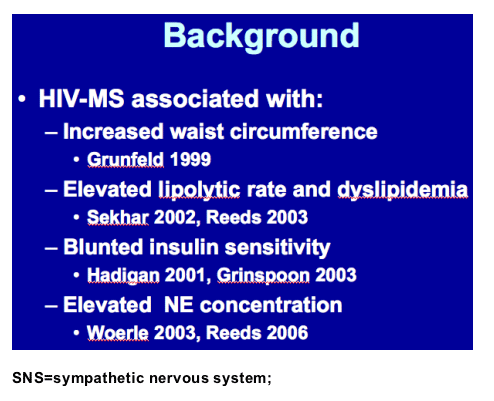

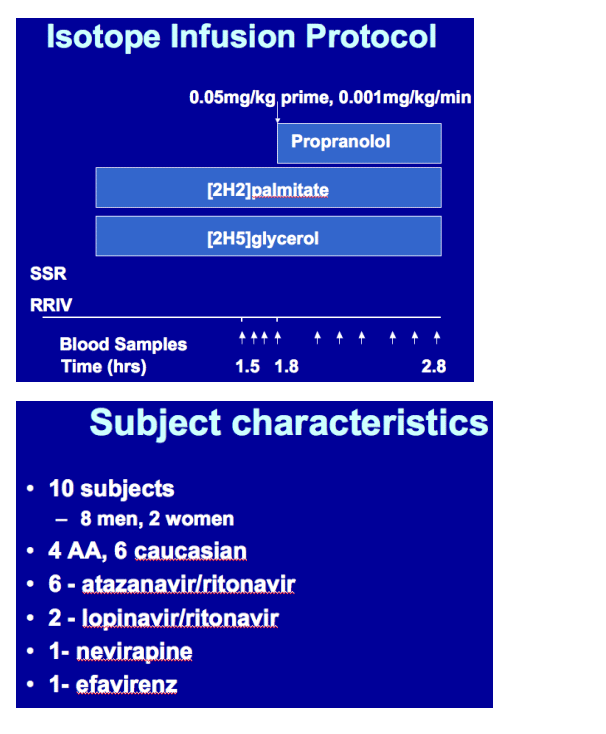
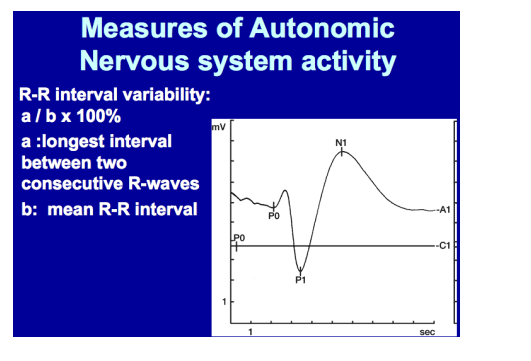
ABSTRACT/Program:
Methods: We measured body composition using DEXA, insulin sensitivity and disposition index (a measure of pancreatic beta-cell function) using 5-h oral glucose tolerance testing with minimal modeling lipolytic rate by infusing stable isotropically labeled [(2H2]palmitate and [2H5]glycerol before and during 60 min of propranolol infusion and autonomic nervous system activity (plasma norepinephrine concentration [index of SNS activity], sympathetic skin response [index of SNS activity {sympathetic nervous system}] and heart rate variability [index of cardiovagal parasympathetic skin tone]) in 10 asymptomatic, treatment-naie patients with HIV infection (8 men, 4 African-Americans, age 32 +/- 3 3 years). Measurements were repeated after 4 months of HAART (6 Reyataz/r, 2 lopinavir/r and 2 efavirenz-based).
RESULTS:
HAART increased CD4 t-cell count (371 +/-24 vs 512 +/-62 cells/mm, p<0.04), body mass index (26.3 +/-1.5 vs 27.2 +/-1.7 kg/m, p=0.02) and trunk fat (9.1 +/-2.0 vs 9.8 +/-2.2 kg, p=0.05). Insulin sensitivity declined (6.6 +/-1.9 to 4.8 +/-0.8x10 -5th dl/kg/min, p<0.05), but disposition index remained unchanged (7.85 +/-1.3 vs 9.0 +/-0.5x10 -15th dl/kg/min2/pmol/l). Plasma norepinephrine concentration (184 +/-27 vs 141 +/-12 pg/ml), palmitate rate of appearance (Ra; 1.7 +/-0.2 vs 1.6 +/-0.2 umol/kgFFM/min), glycerol Ra (3.1 +/-0.3 vs 3.0 +/-0.3 umol/kgFFM/min) and proprandolol suppression of palmitate Ra, (18.8 +/-4.7% vs HAART 17.7 +/-5.3%) or glycerol Ra (pre 17.6 +/-4.6% vs post 19.7 +/- 4.7%) did not change with HAART. Basal heart rate variability was not affected by HAART (16 +/-3% vs 18 +/-2%). Sympathetic skin response amplitude declined markedly (3,127 +/-603 vs 495 +/- mA, p<0.02) with HAART, but latency was unchanged (1,182 +/-013 vs 1,152 +/-98 ms).
CONCLUSIONS:
Short-term HAART causes insulin resistance, but does not affect basal lipolytic rates or the contribution of beta-adrenergic activity to lipolysis. In addition, HAART does not affect sympathetic or parasympathetic nervous system activity, but impairs SNS responsiveness. These data emonstrate that HAART likely causes insulin resistance in skeletal muscle, but not adipose tissue. The mechanisms responsible for these metabolic effects are not known, but it does not invi=olve changes in autonomic nervous system activity.
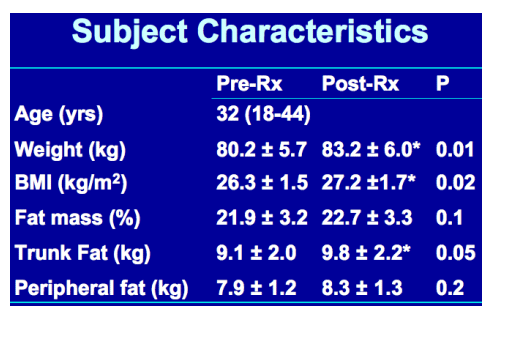

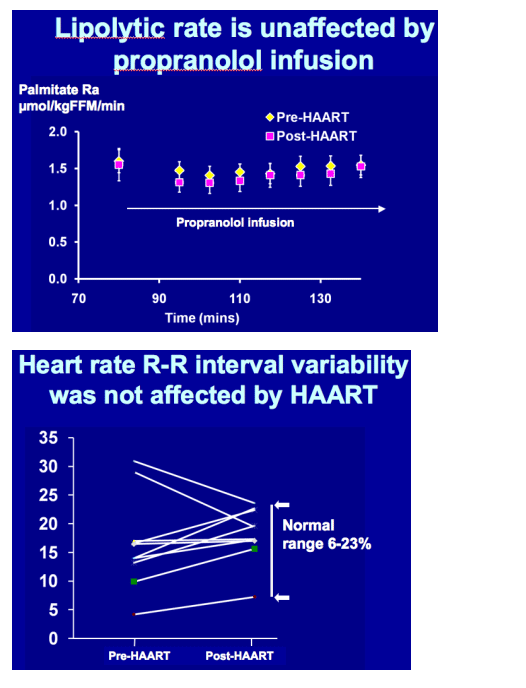
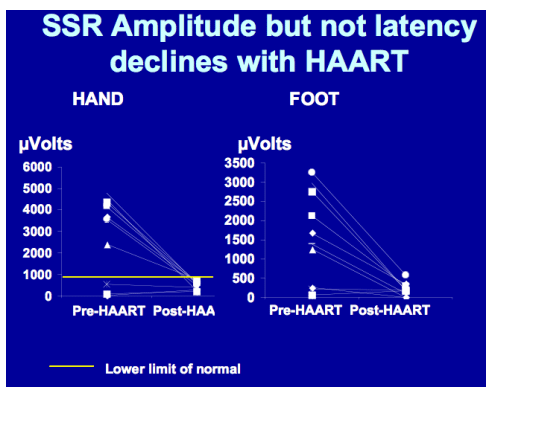
|
| |
|
 |
 |
|
|